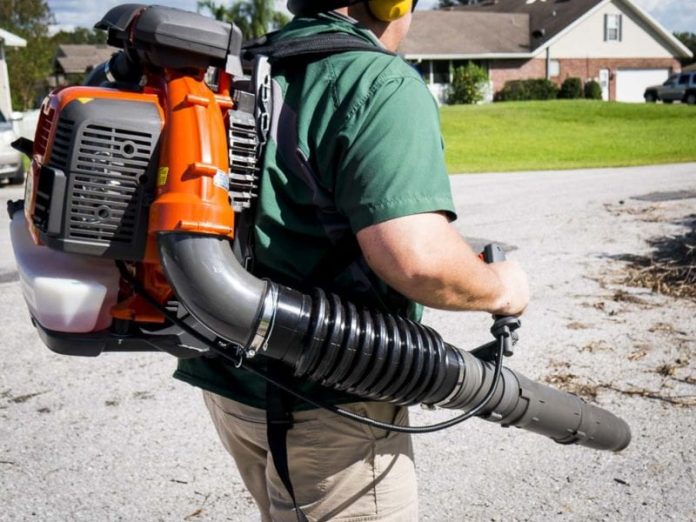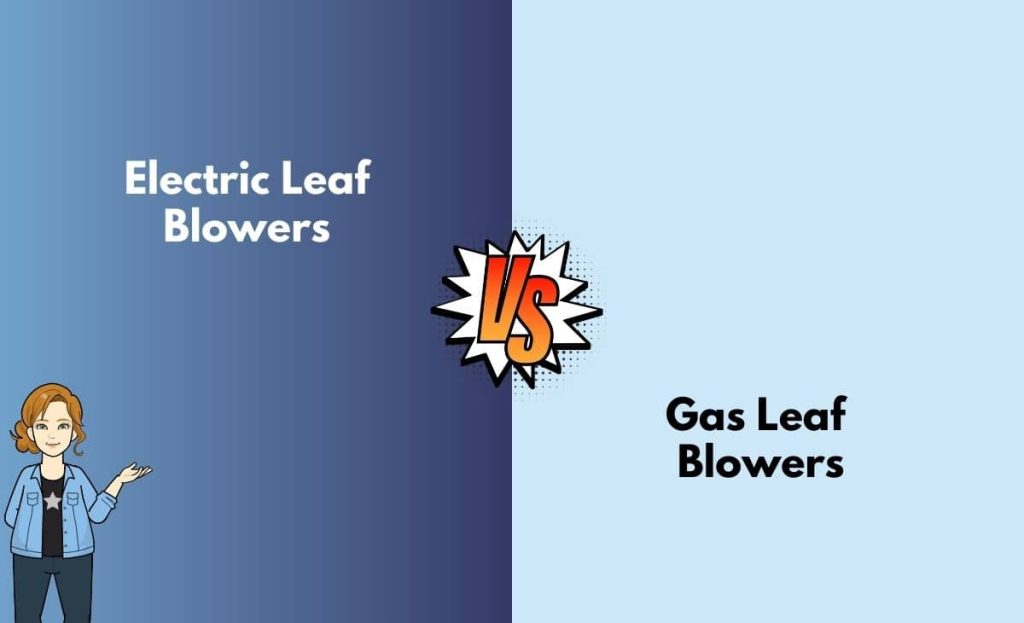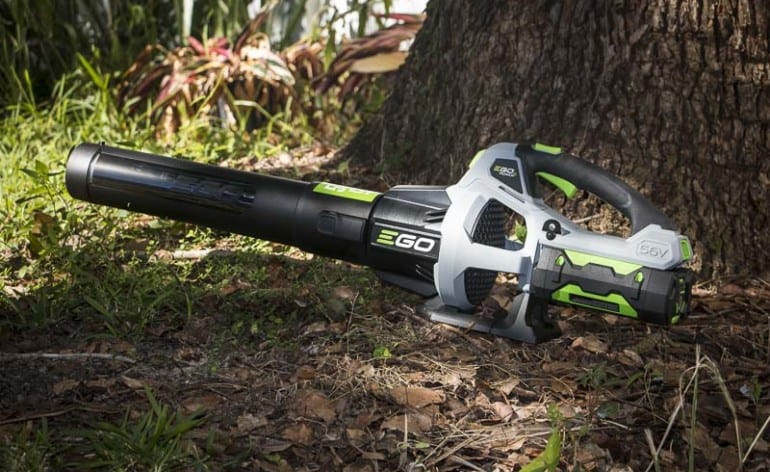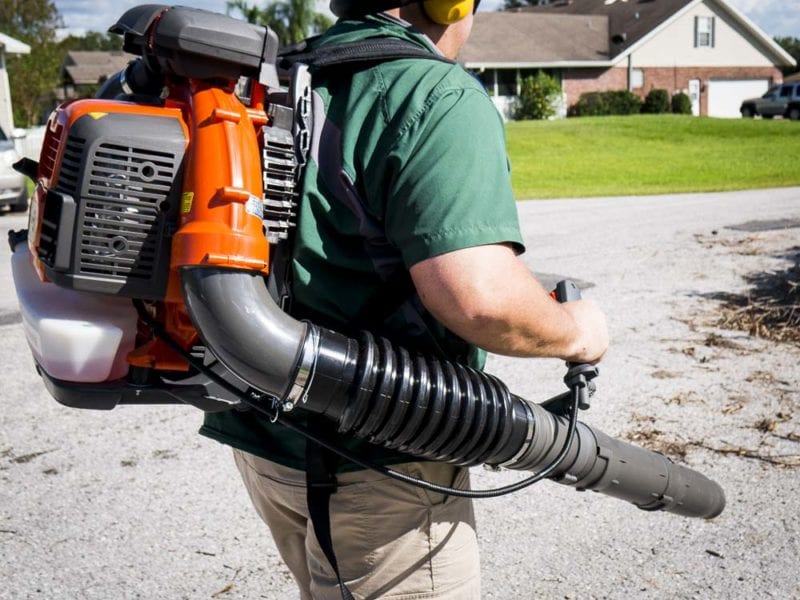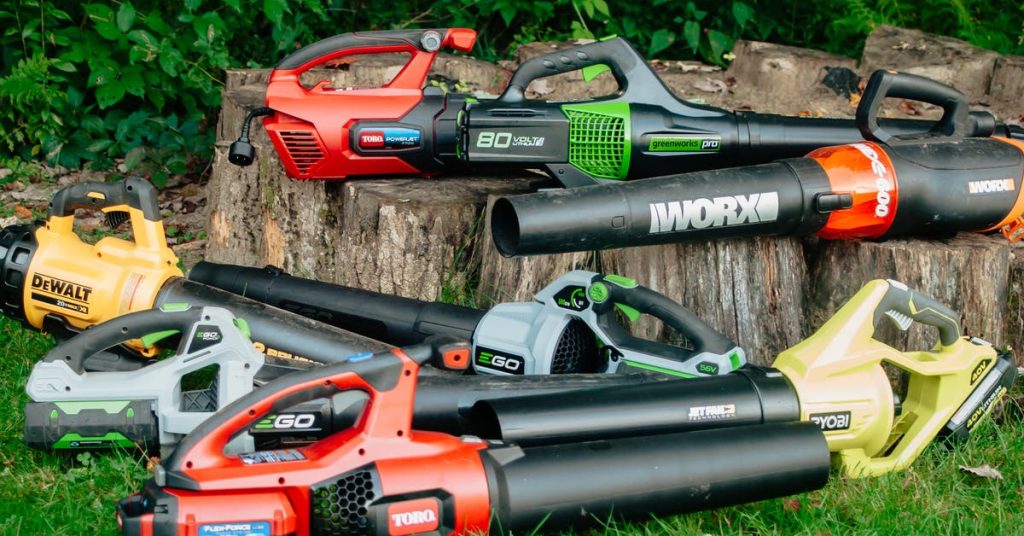Gas and electric leaf blowers are two common choices for clearing leaves and debris from our outdoor spaces. But when it comes to power, which one reigns supreme?
Gas leaf blowers are often known for their robust engines and ability to generate high air speeds, making them a popular choice for larger yards or commercial use.
On the other hand, electric leaf blowers are praised for their convenience, eco-friendliness, and quieter operation.
This article will explore the power differences between these two leaf blower options, helping you make an informed decision for your leaf-clearing needs.
Power Output
Gas Leaf Blowers
Gas leaf blowers are known for their powerful performance. They are equipped with engines that run on gasoline, which allows them to generate a significant amount of power. This makes them highly effective in removing leaves, debris, and other lightweight objects from your yard.
Gas leaf blowers are capable of producing a high airspeed and air volume, which makes them efficient in tackling large areas with ease. Their robust engines can handle more challenging tasks and are particularly useful for commercial or heavy-duty use.
Electric Leaf Blowers
Electric leaf blowers, on the other hand, derive their power from electricity. While they may not match the power output of gas leaf blowers, they still offer ample strength for most residential applications.
Electric leaf blowers are designed to be lightweight and compact, making them more maneuverable and user-friendly. They are ideal for smaller yards or areas that require less power. Electric leaf blowers are also quieter than their gas-powered counterparts, which can be a significant factor for those who value peace.
Engine Type
Gas Leaf Blowers
Gas leaf blowers are equipped with internal combustion engines that run on gasoline or a gasoline-oil mixture. These engines are typically two-stroke engines, which require a mixture of fuel and oil to operate. The two-stroke design provides more power than four-stroke engines, making gas leaf blowers highly efficient in power output. However, it is essential to note that the combustion process in gas engines produces emissions and requires more maintenance.
Electric Leaf Blowers
Electric leaf blowers, on the other hand, are powered by an electric motor. This motor runs on electricity, either from an outlet or a rechargeable battery pack. Electric motors are known for their simplicity and ease of use. They require minimal maintenance, as there are no fuel filters, spark plugs, or carburetors to worry about. The electric power source also means zero emissions, making electric leaf blowers a more environmentally friendly option.
This image is the property of www.gardentoolexpert.com.
Horsepower
Gas Leaf Blowers
Gas leaf blowers typically have higher horsepower ratings compared to electric leaf blowers. The horsepower of a gas leaf blower can range from 2 to 4 or even higher, depending on the model and brand. This allows them to generate more power and provide stronger airspeeds and volumes. The higher horsepower of gas leaf blowers makes them suitable for heavy-duty tasks, particularly for professional landscapers or homeowners with more significant properties.
Electric Leaf Blowers
Electric leaf blowers generally have lower horsepower ratings compared to their gas counterparts. Their horsepower typically ranges from 1 to 2, depending on the model and manufacturer. While this may seem lower in comparison, electric leaf blowers can still blow leaves and light debris effectively in residential settings. They may not have the same power level as gas leaf blowers, but they make up for it conveniently and quickly.
Air Speed
Gas Leaf Blowers
Gas leaf blowers are known for their superior airspeed capabilities. They can achieve airspeeds of up to 200 miles per hour or more, depending on the model. The high airspeed allows gas leaf blowers to move leaves and debris over long distances quickly.
This makes them highly effective for clearing large open areas such as lawns, driveways, or parking lots. The powerful air speed of gas leaf blowers ensures efficient and quick leaf blowing, saving you time and effort.
Electric Leaf Blowers
Electric leaf blowers, while not as powerful as gas leaf blowers, still offer respectable airspeeds. Most electric leaf blowers can achieve airspeeds ranging from 120 to 150 miles per hour. While this may not be as high as gas-powered blowers, it is still sufficient for most residential applications.
Electric leaf blowers are ideal for smaller yards or areas where precision is critical. Their lower airspeeds also result in less disturbance to surrounding objects, such as mulch or flowerbeds.
This image is the property of www.diffzy.com.
Air Volume
Gas Leaf Blowers
Regarding air volume, gas leaf blowers excel at providing high airflow rates. Depending on the model and brand, they can deliver air volumes ranging from 400 to 700 cubic feet per minute (CFM). The high air volume allows gas leaf blowers to displace leaves and debris efficiently, even in large quantities. This makes them particularly useful for clearing large areas or handling heavy-duty tasks.
Electric Leaf Blowers
Electric leaf blowers, although generally having a lower air volume than gas blowers, still offer adequate airflow rates for residential use. Electric leaf blowers typically have air volumes ranging from 200 to 400 CFM. While this may not be as high as gas-powered blowers, it is still sufficient for most homeowners. Electric leaf blowers are ideal for smaller yards or areas that require less power and airflow. They are also more lightweight and easier to handle, making them suitable for homeowners of all ages and physical abilities.
Noise Level
Gas Leaf Blowers
One aspect that gas leaf blowers are often criticized for is their noise level. Gas-powered engines tend to be louder and emit more noise than electric motors. Depending on the model and brand, gas leaf blowers can produce noise levels ranging from 70 to 100 decibels (dB). This noise level can be significant and may cause disturbances to yourself, your family, and your neighbors. It is important to consider noise regulations in your area and take precautions to minimize noise pollution when operating a gas leaf blower.
Electric Leaf Blowers
In contrast, electric leaf blowers are generally quieter and emit less noise than gas blowers. Electric motors produce less noise overall, with electric leaf blowers typically operating at noise levels ranging from 60 to 80 decibels (dB). This lower noise level makes electric leaf blowers more suitable for neighborhoods or areas with noise restrictions. It also contributes to a more pleasant and peaceful leaf-blowing experience, with less disturbance to yourself and those around you.
This image is the property of www.protoolreviews.com.
Portability
Gas Leaf Blowers
Gas leaf blowers are often heavier and bulkier compared to electric leaf blowers. This can make them more challenging to maneuver, especially for individuals not accustomed to handling heavier equipment. However, gas leaf blowers often come with shoulder straps or backpack-style designs to help distribute the weight and improve comfort during operation. While they may be less portable compared to electric blowers, they are still highly effective for tasks that require mobility, such as clearing large yards or commercial properties.
Electric Leaf Blowers
One of the key advantages of electric leaf blowers is their portability. They are generally lighter and more compact than gas leaf blowers, making them easier to handle and maneuver.
Electric leaf blowers are designed with user comfort in mind, often featuring ergonomic handles and lightweight materials. Electric blowers’ reduced weight and compact size also make them easier to store and transport. This makes electric leaf blowers an excellent choice for homeowners with smaller yards or limited storage space.
Environmentally Friendly
Gas Leaf Blowers
Gas leaf blowers are notorious for their emissions, as they rely on gasoline or gas-oil mixtures to power their engines. These emissions contribute to air pollution and can have a negative impact on the environment.
Gas engines also require regular maintenance and can produce odors and fumes during operation. It is important to note that some newer models of gas leaf blowers may meet stricter emission standards and feature more fuel-efficient engines, reducing their environmental impact to a certain extent.
Electric Leaf Blowers
Electric leaf blowers are considered to be more environmentally friendly compared to gas blowers. Since they are powered by electricity, they produce zero emissions during operation. This makes them a cleaner and greener alternative for those prioritizing environmental sustainability.
Electric leaf blowers also eliminate the need for fuel storage and gas or oil mixture disposal. However, it is essential to consider the source of electricity used, as electricity may be generated from non-renewable resources depending on your location.
This image is the property of www.protoolreviews.com.
Maintenance
Gas Leaf Blowers
Gas leaf blowers require more maintenance compared to electric blowers, primarily due to their combustion engines. Gas engines need regular maintenance, including oil changes, spark plug replacements, and air filter cleanings. The fuel mixture used in gas blowers also requires proper storage and handling to prevent degradation. Additionally, gas blowers may require winterization procedures to protect the engine during colder months. Despite the extra maintenance, gas blowers can provide years of reliable performance when correctly cared for.
Electric Leaf Blowers
Electric leaf blowers require minimal maintenance compared to gas blowers. There are no spark plugs, oil changes, or fuel mixtures to worry about, simplifying the maintenance process. The main components that may require attention are the air filters, which should be cleaned or replaced periodically. Additionally, rechargeable battery packs in cordless electric blowers may need replacement after a certain number of charge cycles. Overall, electric blowers are much more user-friendly in terms of maintenance and offer hassle-free operation.
Cost
Gas Leaf Blowers
Gas leaf blowers tend to be more expensive upfront compared to electric blowers. This is partly due to the higher manufacturing costs associated with combustion engines. Gas blowers also require fuel, which can add to the ongoing costs of ownership.
However, it is worth considering that gas blowers often provide more power and durability, making them a long-term investment. The higher cost of gas blowers may be offset by their performance and longevity with proper maintenance.
Electric Leaf Blowers
Electric leaf blowers are generally more affordable compared to gas blowers. They have simpler designs and do not require the use of fuel, resulting in lower manufacturing and operating costs.
Electric blowers are also more energy-efficient, reducing electricity consumption and costs. Additionally, the decreased maintenance requirements of electric blowers contribute to overall cost savings. While electric blowers may not have the same level of power as gas blowers, they offer excellent value for homeowners with smaller yards or those looking for a budget-friendly option.
In conclusion, both gas leaf blowers and electric leaf blowers have their own set of advantages and considerations. Gas blowers are known for their powerful performance, higher horsepower, and ability to tackle heavy-duty tasks. They are ideal for more significant properties and commercial use.
On the other hand, electric blowers offer convenience, portability, and quieter operation. They are well-suited for residential use and smaller yards. Consider your yard’s specific needs, power requirements, and environmental concerns when choosing between gas and electric leaf blowers. Ultimately, the right choice will depend on your priorities and preferences.
This image is the property of cdn.thewirecutter.com.

